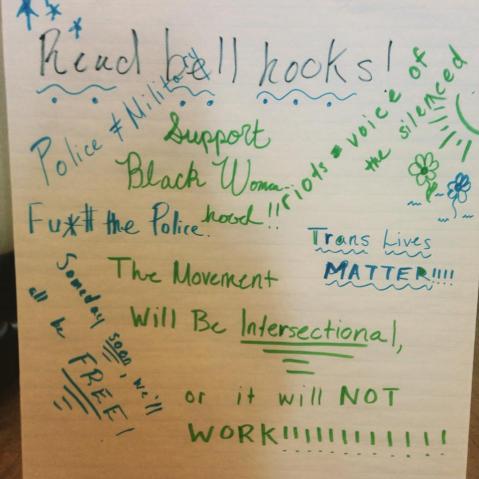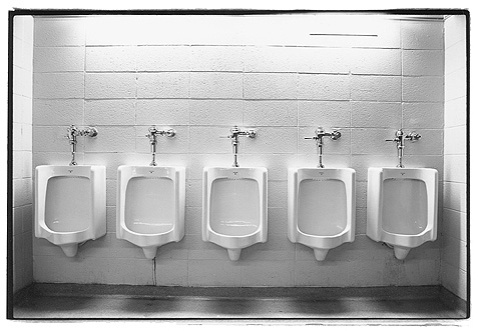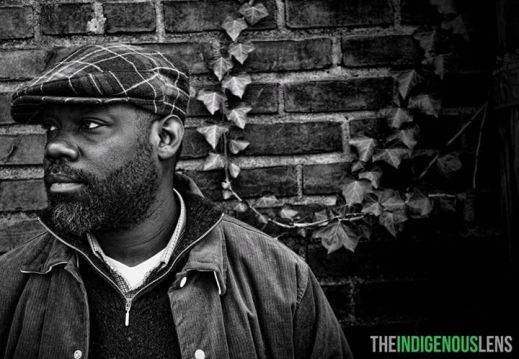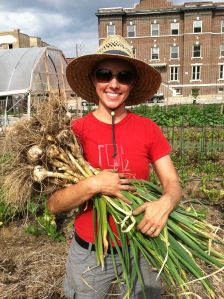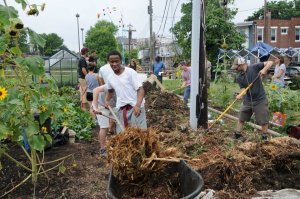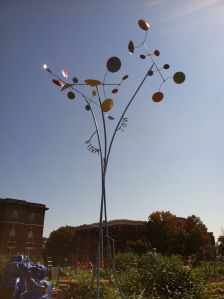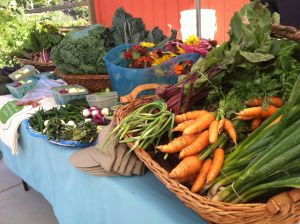Baltimore Uprising Art Archive: Series 1
This gallery contains 6 photos.
“Art is not the handmaid of politics. It is its own remedy! And its healing is sacral.” – William Everson Today begins a series we are dubbing the Baltimore Uprising Art Archive. It is a living archive designed to highlight the cultural production efforts of Baltimore’s citizens in response to the Baltimore Uprising. Please contribute […]
Artists Within Spotlight: Coming Out – Dance, Memory and Hope at J. Van Story Branch
“We have seniors here that have been here for years and they don’t want to come out and mix with 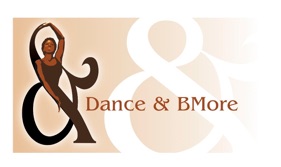 the new population.”
the new population.”
This sentiment was met with approval from other residents and visitors of the J. Van Story Branch apartment following an interactive workshop developed by Dance and B’More for Artists Within. Dance & B’More provides biweekly movement classes and multi-disciplinary workshops with the residents of the J. Van Story Branch Senior apartments. Dancers and residents collaborate to create new memory based works in movement and spoken word intended to increase activities for the residents, improve memory and increase residents’ mobility.
Artists Within is a coalition of award-winning arts and activist organizations engaged with social practice. Working with Station North Arts & Entertainment, Inc., the Central Baltimore Partnership, and MICA’s Baltimore Art + Justice Project, the Artists Within coalitions seeks to bring new energy to the community development efforts underway in the Station North Arts & Entertainment District. The coalition includes Dance & B’More, FORCE: Upsetting Rape Culture, Single Carrot Theatre, and Youth Learning Lab of Education and Applied Design. Working with local residents ranging from middle school students to senior citizens, the coalition activates and cultivates the artists, designers, and performers within these residents with the intention of increasing local participation in the arts and in community development efforts.
On this brisk October day, five senior residents and one visitor participated in the hour-long Dance and B’More workshop led by CJay Phillip. Participants told stories of their favorite concerts and childhood memories. These stories were set to music and movement led by the musicians, therapists and dancers. Ranging from ages 62 to 80, participants completed warm up activities, sang Motown and moved their bodies to African drum and keyboard. After the workshop, residents sat down to talk about their experience, their hopes and their challenges living in J. Van Story Branch. More importantly, the seniors talked about coming out.
“Sometimes, some people do [come out] and some people don’t. Some people don’t even speak.”
Coming out at J. Van Story Branch has multiple layers of meaning here. Coming out is not just about leaving one’s apartment; coming out also means feeling safe, being heard and having a sense of kinship with other residents and visitors in the building.
“Older people used to come out more but then other people was being nasty to them. They don’t have no security or nothing so the older people just stay in their rooms now.”
Eight years ago, the population at J. Van Story branch changed from seniors only to a mixed population of ages and abilities. As the population has shifted, the number of activities designed to engage residents has decreased, while fears, insecurity and isolation has increased. But things may be changing for the good.
“It’s a good thing, this is something we need. When they [Dance and B’More] come out, I always come out.”
Through Artists Within, Dance and B’More is bringing in activities residents enjoy and helping residents feel connected across population through movement, memory and community building. Over the next year, Artist Within and Dance and B’More will be able to see if by consistently coming in, residents will feel safe coming out.
Newsflash! BA+JP Interviewed by Tom Hall on WYPR 88.1
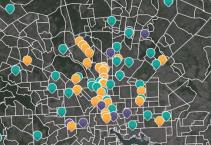 The Baltimore Art + Justice Project was featured on Baltimore’s NPR station, WYPR, Tuesday, January 14th at 9:40 am. Culture Editor, Tom Hall interviewed Project Coordinator, Kalima Young about the Baltimore Art + Justice Project and our work to map Baltimore’s arts based social justice assets.
The Baltimore Art + Justice Project was featured on Baltimore’s NPR station, WYPR, Tuesday, January 14th at 9:40 am. Culture Editor, Tom Hall interviewed Project Coordinator, Kalima Young about the Baltimore Art + Justice Project and our work to map Baltimore’s arts based social justice assets.
Have a listen! http://programs.wypr.org/podcast/where-justice-and-art-meet
And if you have not done so, get on the map at www.artplusjustice.org!
Guest Blogger: Devlon Waddell Art is Important?

You read something which you thought only happened to you, and you discover that it happened 100 years ago to Dostoyevsky. This is a very great liberation for the suffering, struggling person, who always thinks that he is alone. This is why art is important. Art would not be important if life were not important, and life is important.~James Baldwin, Conversations with James Baldwin
I submit that life is justice, and the pursuit thereof. The correlation of life and art can be made in any number of trite, uninspired ways. I imagine that my movement toward my own artistic self was, directly, a byproduct of life–living. I would always find myself experiencing a special sort of alone. Suffering through a oppressively mundane existence; struggling to announce a me that is indeed alive and present. Beyond the platitudes of elders and encouragement of contemporaries there was a void left. The irony seems always to be that one is, too often, unaware of the missing piece.
I’ve only adopted the “artist” moniker to offer society the opportunity to frame what it is that I do to survive. And, I was so inclined only because I read something that I thought only happened to me, and discovered it happened 61 years ago, to someone else.
Where does art and justice intersect? In a full-on, speed limit be damned, unapologetic, unashamedly reckless attempt at experiencing the most rewarding life possible. This approach is predicated on the notion that one’s success, happiness, validation, affirmation and joy are all, at once, utterly dependent on those things being equitably experienced by his/her community. Without regard to religious leanings, certain truths remain:”For what will it profit a man if he gains the whole world and forfeits his soul?” So what of the fullness of life, if it is experienced in a vacuum?
I am alive. I am living. I am art. I am justice.
Devlon E Waddell
Co Founder/Director
www.dewmorebmore.org
Guest Blogger: Peter Bruun
Using art to advocate creatively is rich with potential, and riddled with challenges. Not least among these is grappling with what we mean by “art”; regardless of how one may feel about feminism, globalism, or multiculturalism, there is no avoiding these phenomena have contributed to eviscerating shared understandings of art as a concept.
I believe the notion of art is itself a construct; a cultural invention to imply certain shared understandings on value, meaning, and status. Objects of any kind are never inherently art or not, but rather objects are understood to be art because we make decisions to anoint them as such. Art is (indeed) in the eye of the beholder.
For me, a key criterion on whether or not something ought to be thought of as art is its standing as an emblem of cultural or personal identity: if notions, qualities, and/or meanings of identity are embodied or conveyed or elucidated for the attentive observer by an object, that object most likely qualifies as art (at least to my eyes).
I accept that something may be art for me but not for someone else. In this regard, I stand in agreement with Arthur C. Danto, who wrote about art as an object plus a context—the context being to my mind the subjective perspective of a viewer.
Given an “art” world of ambiguity and uncertainty, I believe using art to advocate creatively begins with persuading others that what you put in front of them is not only art, but also art worth paying attention to. My presumption here is art carries an aura of authority and authenticity, so if a targeted audience can be convinced on the art-hood of what they perceive, then one is well on the way to achieving advocacy goals.
I have been involved in numerous art projects intended to challenge predominant (and predominantly negative) stereotypes of one social group or another. In project after project, engaging artists and non-artist community members alike, we sought to build and promote inventories of positive identity image.
These art projects have been nothing less than campaigns to change perceptions, only often with divergent value systems in tension with one another: one privileged a more esoteric and elite attitude toward art (i.e. art is the domain of practiced experts), while the other favors a more democratic, vernacular notion on art and imagery (i.e. art works by the unpracticed ought to be considered on equal footing with that of well-established artists).
The solution these projects sought to strike became not so much “this” or “that” kind of art to emphasize but rather “this” and “that”—project leaders spent time cultivating the involvement of well-established artists and including traditionally art-centric exhibitions and events, and also organizing widespread community participation via art workshops and partnerships with non-art, social-minded organizations.
The range of activities was inevitably rich—but at times divided. That is, from time to time, works by the art folks appealed to the art folks, and works by the community folks appealed to the community folks, with little bridging betwixt the two. In such instances, projects fell short of intended goals because the “art” successfully spoke only to the already converted, perhaps fortifying attitudes but carrying little sway in changing them.
Ironically, this proves true most often not with community-made art, but rather with the art made by so-called professionals—art by highly practiced artists frequently does not appear relevant to non-art-centric audiences. In such instances, there is a gap—and need for translation—between art that subtly expressed meaningful content, and a lay audience ill-equipped to find merit on their own.
Such art’s worth is too often thought to be implicit, leaving the art-centrically inclined feeling little need to put energy into convincing the public that their art matters. The art’s efficacy as an advocacy tool is then limited.
(A similar shortcoming could be said to be true for the efforts around the community-made art: if it fails to speak to the art-centric, whose notions on “quality” often inhibit accepting such work’s “art” status, then it too suffers from diminished efficacy.)
I suspect one’s biases on what art matters always informs assumptions about audience response: if one is convinced of the inherent value of the art one favors, one does not take pains to render that value transparent to others. Put plainly, art neither persuasively explained nor adequately presented leaves it under-appreciated as art among those it could have reached, and therefore less effective as creative advocacy than ought to have been the case.
Advocating creatively sounds good, but to do it well is hard and humbling work, demanding of practitioners a combination of self-confidence and reserve, diffidence and insistence, and attention to what speaks to those around you as well as those you want to reach with your message.
What is the Intent?

by Brie Hagen and John Massad
On December 13, 2012, the BA+JP held a community dialogue, Merging Art and Activism. The event included an exercise where attendees discussed four Baltimore art/activism projects: Baltimore Storm Drain Project, Schools Not Jails, Baltimore Graffiti Warehouse, and Baltimore LOVE Project. Throughout the discussion, those in attendance were grappling with the concept of the intersection between art and activism. Participants unpacked what constitutes art as “activism.” This distinction began to be defined by evaluating whether or not a piece should be understood within the context of active engagement with communities to foster change.
The Schools Not Jails example was discussed as low on the dimension of “art” and quite high along the dimension of “activism,” while many felt that the Baltimore Graffiti Warehouse was the reverse. The Baltimore Storm Drain Project, as well as the Baltimore LOVE Project were viewed largely by participants as somewhere in the middle, though it is vitally important to note that there was not consensus on either. It was clear in the conversation that not all art in the public sphere is inherently considered “activism.”
An underlying theme emerged in the conversation about what people looked for in defining art and activism. What was not discussed, but was woven through each of the conversations, and lies at the intersection, is intentionality. What is the intention of the person who produced each project and the artists associated with it? Is it intended to motivate change? Is it intended to speak truth to power? Can we really know, and does it even matter?
So, as we are considering the intersection of art and social justice activism, we are grappling with definitions of what constitutes “art” and “activism,” with an overlay of what the intention of the artist/producer really is. And what about a work of art that is not in any way “intended” by the artist to produce change and yet is so provocative that it redefines discourse about both?
What do you think?
We want to hear what you have to say on the topic of intentionality, art and activism in Baltimore.
If you are interested in submitting a blog post on the topic, please email your post by this Friday Feb. 8th to d.brienne.hagen@gmail.com to be featured next Monday Feb. 11th.
Musings of a Project Coordinator: End of Summer Update

Greetings All,
What a whirlwind of activity since last I mused about the ins and outs of the Baltimore Art + Justice Project (BA+JP)! How does one sum up four months of amazing work? I will provide you with the highlights via my best friends: bullet points.
- After a summer of beta testing and refining, the Baltimore Art + Justice Questionnaire is scheduled to launch in September. In the next few weeks, we will direct artists, designers, organizations and advocates to the website to complete the questionnaire for the interactive Baltimore Art + Justice Project map and website. This questionnaire also introduces these stakeholders to the national Animating Democracy database. The link and materials will be posted here on the BA+JP blog as well as http://www.mica.edu/bajp for everyone to participate.
- On August 28, 2012, the Baltimore Art + Justice Project was featured on the Marc Steiner Show on 88.9 FM. I and advisory committee member Lea Gilmore explained the scope of the project, talked with some Baltimore community art enthusiasts and I used my mutant powers to destroy Marc Steiner’s chair.
Coming Up:
- Stay tuned for a profile on local artist Ashley Milburn, a MICA alumnus. Ashley organized last year’s Roots Fest and creates inspiring and innovative social justice based art work. Prepare to be challenged and moved by The Hoodie Diaries.
- We are partnering with the UMB Imaging Research Center to develop the Baltimore Art + Justice website and mapping platform. Our collaboration begins in September and we expect the first Baltimore Art + Justice Project maps to debut in February 2013.
I will represent BA+JP at the September 19th, 2012 grand opening of the Performing Arts and Humanities Building at UMBC, co-sponsored by Greater Baltimore Cultural Alliance.Thanks for keeping an eye on the Baltimore Art + Justice Project. The next four months will be all about data collection, compelling dialogue, community building and holiday food. Oh yeah, and justice. Lots and lots of justice.
Happy Labor Day!
Kalima
Inspired by Weeds: A Profile of Artist/Farmer Elisa Lane
What’s your name?
Elisa Lane
How old are you?
32
Which neighborhood do you live in?
Describe your art.
When I lived in Philadelphia from 2001- 2009, I was choreographing and performing modern dance. During that time, I also performed as a theatre clown with Clowns Without Borders traveling internationally to make children laugh. When I moved to Baltimore, I worked at Wholly Terra in Hampden, welding and making stained glass sculptures. Traveling in Haiti with Clowns Without Borders, I became increasingly interested in sustainability and self-sufficiency, after being awestruck by the implications/connections between deforestation, lack of healthy drinking water, and poverty. I began pursuing sustainable agriculture in my quest for personal self-sufficiency and wanting to help others grow their own food.
What are you currently working on?
I’m the Farm Manager of Whitelock Community Farm, a resident-run urban farm in the Reservoir Hill neighborhood of
Baltimore. In 2010 we began building a neighborhood-supported agriculture project growing healthy, sustainable, and affordable produce for the residents in our neighborhood.
In addition to growing food for the community, the farm implements its mission through farm-based learning programs such as gardening and cooking classes for children and adults. We believe that everyone has a right to affordable, healthy, quality food accessed in a way that is environmentally sustainable and socially just.
We have a CSA and a market stand open on Saturdays where residents can buy fresh produce grown at the farm. Residents can also work at the farm in exchange for produce. In August of 2012, the Linden Market, a neighborhood corner store, will start carrying our produce as well.
What social justice cause(s) are you particularly drawn to, and why?
I was drawn to sustainable agriculture because the impact is not only environmental but also social, economic and healthful. I also just really love the company of other farmers!
Who or what inspires you?
Weeds! They are so prolific and will grow even in the poorest conditions. They are relentless and unapologetic.
What’s the best part about being an artist in Baltimore?
It seems like there’s a lot of possibility in Baltimore, because there’s so many neglected spaces just waiting for artistic, social projects. There is also a supportive community of likeminded artists and activists who are willing share their resources and ideas.
What’s the worst part about being an artist in Baltimore?
I can’t think of any.
What sort of and/or social justice projects would you love to take on?
I would love to create more events that cross-pollinate performance, food, and education. Like the STEW events, I love those! I also want the farm to be a launch pad for beginning gardeners, helping people in the city grow their own food.
Who would you like to collaborate on a project with?
I would love to collaborate with artists and educators on creating events around the celebration and education of healthy eating and growing food.
What’s one social justice organization that people need to know about, and why?
I just learned about City Slicker Farms in Oakland, CA. In addition to having a productive urban farm, they also have a backyard garden program. They help train new gardeners, test their soil for them, and hook them up with a garden mentor who works with them for a year. Then, in a year, the new gardener becomes the mentor, educating other backyard gardeners. Providing fresh produce to neighbors is one thing, but helping growing new gardeners that can produce their own food is where the real revolution is.
How do you think artists are changing Baltimore?
Artists are visionaries that help us see our world and the way we live in new ways. They help connect the intellectual with the emotional, which is a catalyst for change. At its best art moves us to take action.
~~~
Are you an artist working for social justice? Do you have something to say?
Leave a comment below if you’d like to fill out the Baltimore A + J artist profile questionnaire!
Digital Media as a Tool For Change: The Monteverde New Media Expedition

Recently, I found myself on a plane to Central America, heading for digital video boot camp. Yes, you read that correctly. Digital video boot camp! Couldn’t I have learned how to shoot a camera and use video editing software right here in Baltimore? Yes. Did I really have to travel all the way to Costa Rica to do this? No. But I did—for a variety of reasons both logical and random. And here is what was awesome about it: I learned to make a rough cut video documentary. While hiking. And traveling. And “interviewing” people in a language that I don’t know.
The brainchild of husband-wife video documentary team Austin Haeberle and Wendy Maria Jacques, the Monteverde New Media Expedition drew six participants from six far-flung locations (Los Angeles, Flagstaff, Queens, Oroville, London and Baltimore). We all came to learn video-making skills in a full-immersion format. We were also part of a media-based project seeking to protect and preserve an important ecosystem in Costa Rica. Each of our rough cuts will eventually get cleaned up, subtitled and embedded within a larger digital narrative that will live online and will be embedded with educational tools. The intent is to create an effective tool for education about the human, economic and biological assets of the region in order to make these stories more accessible and alive.
The endeavor brought us face to face with farmers, educators, advocates and others who are living and working within a 164,000-acre parallelogram of land stretching from the Gulf of Nicoya to the cloud forests of Monteverde. With lots to do and not much time to do it, our schedule ran something like this:
Days 1-4: Hike, travel, interview people, shoot a ton of footage
Day 5: Learn Final Cut Pro X and begin using it
Day 6: Self-produce a 3-minute rough cut documentary (one per participant); present said documentary at a community screening
Day 7: Fly home. No rest for the weary, as the saying goes.
We six participants made six mini-documentaries in as many days. I learned that:
- Video editing software is surprisingly addictive.
- If it can go wrong, it will. During my particular interview, which was conducted at the base of a huge old tree in the heart of the rainforest, we ran out of both memory and battery power. Oh, and it was raining.
- Hiking for hours with video equipment is tricky and laborious, but even a boom microphone can traverse two ridgelines, a wind break, a valley descent and a good amount of barbed wire.
- There is no way I could have, or would have learned all this in six days or less back home. Not because there aren’t good opportunities to learn and to create here in Baltimore- there are! But the faraway, full-immersion experience enabled me to get far enough outside of myself to try something altogether different and new.
Walking off an airplane and into someone else’s larger vision for regional storytelling and change was a tremendous, if sometimes challenging experience. In the end, it was both rewarding and informative. It gave me a glimpse into the role digital media can play in assisting a group of individuals to articulate a broadly-shared vision for a region, while each telling their own uniquely personal stories.
Can we do the same here at home in Baltimore? I sure hope so.
Read more about the Monteverde New Media Expedition and the Bellbird Biological Corridor.
Check out the rough cut here:

